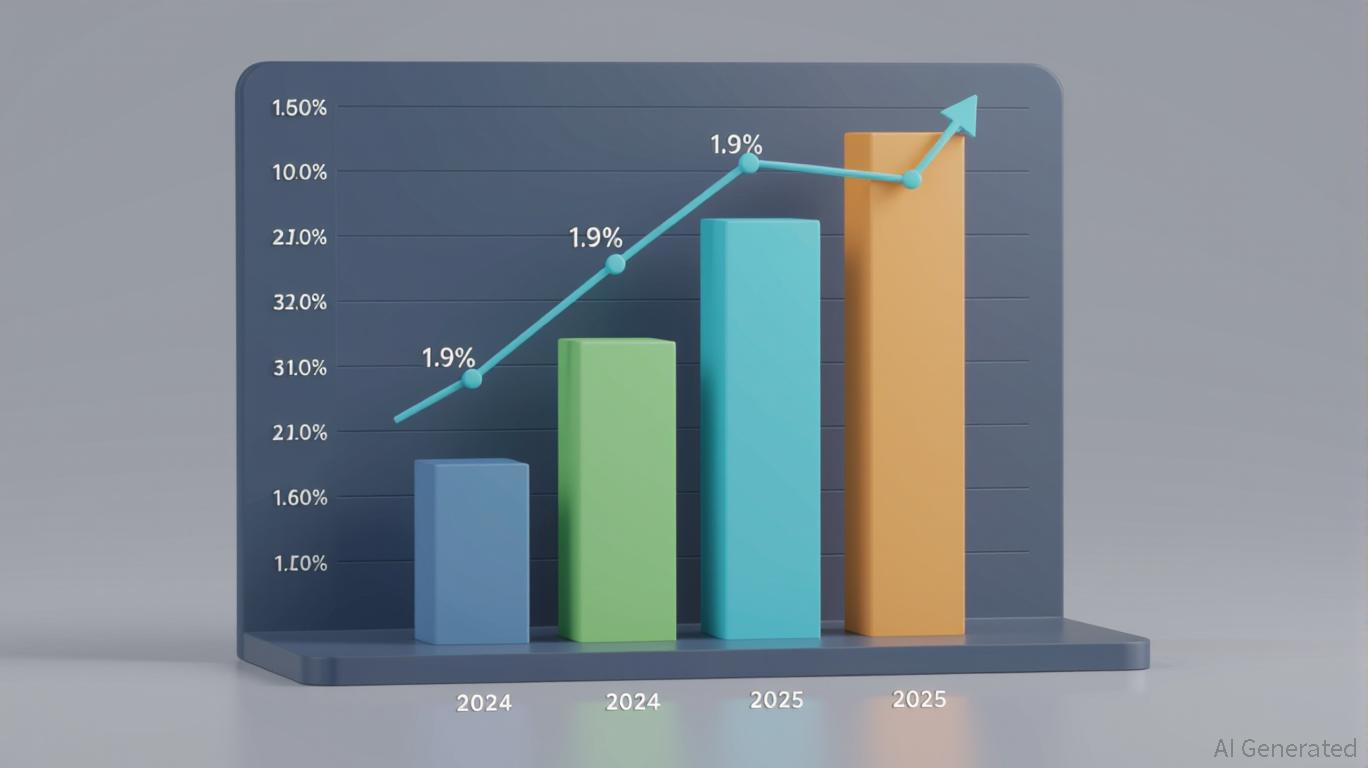AI in Insurance
Smarter processing: AI taking the lead in insurance innovation — Financier Worldwide
Discover how AI-driven intelligent document processing is transforming insurance operations, boosting efficiency, accuracy and innovation.
The insurance industry has been increasingly implementing artificial intelligence (AI), which has transformed traditional processes, providing benefits ranging from operational efficiency to enhanced customer experience and satisfaction.
According to a 2024 KPMG survey of insurance company chief executives, 81 percent consider generative AI (genAI) as a top priority investment for their organisation.
With new transformative technologies comes significant risk and concerns, particularly around unintended discrimination or bias and privacy and security concerns regarding data collection.
The KPMG survey also found that 86 percent of chief executives are concerned about the ethical implications of AI, while nearly three-quarters were apprehensive about security and compliance issues amid increasing regulatory scrutiny of new technologies.
Despite these challenges, the potential benefits of AI in insurance are already being realised. AI can help insurers better serve their customers, manage risks more effectively and reduce operational costs, ultimately leading to a more efficient and accessible insurance market.
Analysis by McKinsey predicts that AI will “increase productivity in insurance processes and reduce operational expenses by up to 40% by 2030”. The future of insurance hinges on leveraging AI responsibly while addressing the associated risks effectively.
This article discusses the implementation of current use cases of AI (both traditional and generative) in the insurance industry.
News
Best’s Special Report: U.S. Property/Casualty Industry Records $11.2 Billion in Underwriting Income in First-Half 2025
The U.S. property/casualty (P/C) industry recorded $11.2 billion in net underwriting income in the first half of 2025, a significant improvement from the $2.9 billion posted in the same prior-year period, according to a new AM Best report.
These preliminary results are detailed in a new Best’s Special Report, titled, “First Look: Six-Month 2025 US Property/Casualty Financial Results,” and the data is derived from companies’ six-month 2025 interim period statutory statements that were received as of Aug. 26, accounting for an estimated 96% of total industry net premiums written.
According to the report, the P/C industry’s combined ratio improved to 96.4 in first-half 2025 from 97.8 in the same period of 2024. AM Best estimates that catastrophe losses accounted for 10.9 percentage points on the six-month 2025 combined ratio, up from an estimated 8.8 points in the previous year.
Growth of 7.5% in net earned premiums in the six-month period offset increases in incurred losses and loss adjustment expenses (LAE), is largely attributable to the January 2025 California wildfires, and other underwriting expenses. An increase in net investment income aided the underwriting gain, boosting pre-tax operating income by nearly 25%. However, a substantial reduction in net realized capital gains, driven primarily by a $47.5 billion decline at National Indemnity Company, contributed to the industry’s net income being cut nearly in half from the same prior-year period to $50.3 billion.

US property insurance costs hit their highest ever level | Mortgage Professional
New report shows average annual insurance payment skyrocketed again in the first half of the year, only adding to affordability woes
Property insurance costs for US homeowners with mortgages climbed to a new record in the first half of 2025, according to the latest ICE Mortgage Monitor report. The average annual insurance payment on a mortgaged single-family home jumped 11.3%, or $20 per month, compared to last year, pushing the typical bill to nearly $2,370. That figure now represents 9.6% of average mortgage-related expenses, the highest share on record.
The report found that insurance now accounts for 9.6% of average mortgage-related expenses, the highest share ever recorded. Over the past five and a half years, the average property insurance payment has risen by nearly 70%, more than double the increase for principal, interest, and taxes.
“It’s not just rising home prices, but also the rising cost of insurance coverage impacting homeowners across the US,” the report said. ICE analysts flagged that while interest payments rose 8% year-over-year, property insurance costs outpaced all other components, with principal payments up just 1% and property taxes up 5%.
Regional disparities widen
Florida and Gulf Coast borrowers, long accustomed to high premiums, saw some relief as legislative changes encouraged private insurers to return and reduced the share of homeowners relying on state-backed insurance plans.
In Miami, the share of mortgage holders on state-backed policies dropped from 46% to 27% in 18 months. “Legislation in Florida aimed at reducing frivolous insurance-related lawsuits has contributed to a sharp reduction in the number of Florida homeowners on state-backed insurance plans,” ICE said.
Meanwhile, California homeowners faced the sharpest increases, with Los Angeles premiums up 9% in just six months and nearly 20% year-over-year, largely due to wildfire risk.

Auto loan delinquencies signal bigger trouble, report says
[Ed. Note: This will make it even more difficult to settle the growing number of Total Loss claims which now represent over 30% of late model vehicles, and especially EVs.]
The growing costs to buy and maintain a car – exacerbated by inflation and tariffs – are leading to rising auto loan defaults and repossessions and a potential crisis for American consumers left unprotected by the federal government, according to a new report by a consumer advocacy organization.
The record number of defaults is a canary in the coal mine for large-scale economic problems, the Consumer Federation of America warned.
"Delinquencies, defaults, and repossessions have shot up in recent years and look alarmingly similar to trends that were apparent before the Great Recession," according to a report by the CFA, which gave USA TODAY an exclusive first look.
7 Years of Double-Digit Growth; New Players on Top 25 E&S Insurers List
2024 marked the 7th straight year of double-digit growth for the U.S. excess and surplus lines market, but the top 25 players no longer command 70 percent of the pie, according to a new report.
AM Best’s latest report on the E&S segment, “Market Need for Specialized Expertise Propels U.S. Surplus Lines Market,” part of an annual series commissioned by the Wholesale & Specialty Insurance Association (WSIA) Education Foundation since 1994, found that 30 years later, direct E&S premiums written by the top 25 groups and Lloyd’s accounted for roughly two-thirds of the $129.8 billion total.
For much of the past three decades, the top 25 surplus lines groups, combined with the syndicates comprising the Lloyd’s market, have accounted for more than 70-80 percent of the surplus lines market direct premiums written, AM Best reported.
Excluding $20.8 billion of E&S premium from the Lloyd’s market, the 25 groups accounted for less than half (49.7 percent) of surplus lines premium, down from 51.3 percent in 2023 and 53.5 percent in 2022.
See TOP 25 LIST
Research

Insurance Sector Resilience and Innovation in 2025: A Deep Dive into Car Insurance's Growth Potential
Insurance Sector Resilience and Innovation in 2025: A Deep Dive into Car Insurance's Growth Potential
- U.S. car insurers showed resilience in 2025, achieving $11.5B underwriting gains amid climate disasters and economic challenges.
- AI-driven risk assessment and UBI (usage-based insurance) transformed operations, with UBI markets growing at 31.1% CAGR to $82.7B by 2025.
- Despite $1.08T policyholders' surplus, challenges persist: 1.9% premium growth lagging inflation and volatile capital gains ($6.8B vs. $58.1B in 2024).
- Climate risks and regulatory scrutiny of AI/UBI innovations highlight ongoing vulnerabilities despite technological advancements.
The U.S. insurance sector has proven its mettle in 2025, navigating a perfect storm of climate-driven catastrophes and economic headwinds with remarkable resilience. For car insurance, the first half of the year delivered underwriting gains of $11.5 billion , a 202% surge from $3.8 billion in H1 2024 , driven by disciplined underwriting and a combined ratio of 96.4% . This improvement is no small feat, especially considering the $37 billion in losses absorbed from the California wildfires in Q1[^2] . Yet, the sector's true strength lies not just in its ability to endure but in its capacity to innovate—leveraging AI and usage-based insurance
(UBI) to redefine risk assessment and customer engagement.
Resilience in the Face of Adversity
The car insurance sector's financial foundation remains robust, with a policyholders' surplus of $1.08 trillion—a buffer that allows insurers to weather large-scale disasters without compromising coverage - This resilience was put to the test in early 2025, when the Palisades and Eaton wildfires caused elevated losses. However, the industry stabilized in Q2, demonstrating adaptability through reinsurance partnerships and catastrophe bondsQ1 2025: Global Insurance Market Overview - Aon[2].
That said, challenges persist. Premiums written in H1 2025 rose to $472 billion , but the 1.9% year-over-year growth rate lags behind inflation , signaling potential market saturation or pricing pressures[^1]
- Meanwhile, realized capital gains plummeted to $6.8 billion in H1 2025 from $58.1 billion in 2024 , a one-time anomaly that underscores the sector's vulnerability to market volatility .
Telematics, Driving & Insurance
60 Million Drivers Now Insured Through Telematics, PTOLEMUS Finds - UBI Market Set to Reach €200 Billion by 2035
The Usage-Based Insurance (UBI) market has now reached over 60 million customers across 450 active programmes – a sixfold increase in just ten years. PTOLEMUS Consulting Group, which predicted the “uberisation” of insurance in 2015, highlights this transformation in its new report.
UBI is now a truly global phenomenon that reaches 59 countries and generates more than €50 billion in premiums, finds the consulting firm in its new report.
This growth reflects the growing smartphonisation of the business. Insurers increasingly embed UBI into their corporate apps, making it a central part of the customer experience.
At the same time, UBI has evolved beyond simple Pay-As-You-Drive (PAYD) or Pay-How-You-Drive (PHYD) models. It is now a proven tool for reducing the frequency and severity of claims, delivering measurable savings to both insurers and policyholders.
Frederic Bruneteau, Managing Director, said: “Whenever insurers propose attractive UBI programmes, customers prefer these to traditional flat-rate, proxy-based offers. As the cost of telematics has become negligible and the benefits more tangible, we expect more and more insurers to make it the central part of their digitalisation strategy.”
PTOLEMUS predicts that by 2035, 180 million vehicles globally will be insured with telematics policies, generating more than €200 billion in premiums for insurers.
InsurTech/M&A/Finance💰/Collaboration
Q2 2025 Insurtech VC Trends | Insurtech exits surge in 2025, VC activity shows signs of recovery
Insurtech exits surge in 2025, VC activity shows signs of recovery
Venture investment in insurtech totaled $2.6 billion across 244 deals in the first half of 2025, placing the year on track to modestly surpass 2024 levels. After three consecutive years of contraction, funding appears to have stabilized, with capital continuing to flow toward platforms improving distribution efficiency and underwriting automation. Large rounds for firms such as Bestow and Marshmallow also highlight investor appetite for challengers to incumbent carriers.
While deal activity remains slow, exits continued the blistering pace set in Q1. Through H1 2025, the sector recorded 30 exits worth $6.2 billion, already well above the three-year annual average of $2.1 billion and 41 transactions. Strategic acquirers are driving much of this activity, capitalizing on compressed valuations and tighter funding conditions to secure next-generation platforms. The IPO market has also shown early signs of recovery, with four offerings year-to-date, including Slide Insurance and Yuanbao Insurance, both of which listed on Nasdaq in Q2.
Table of contents
- Insurtech landscape
- Insurtech VC ecosystem market map
- VC activity
- Insurtech VC deal summary

Top insurtech funding rounds, August 2025 | Digital Insurance
There were about 50 funding events in the insurtech sector in August 2025, according to a review by Digital Insurance. What follows is a selection of these, focusing on those in the insurtech and property & casualty sectors that are part of the venture-capital financing model. (Other funding events, such as private-equity infusions, are included in the overall count.)
A portion of the data was sourced from Crunchbase. Other information, including quotes from investing VCs, comes from company announcements. For our previous edition, which covered July, click here. These updates will continue monthly.
Climate/Resilience/Sustainability

Frequent Smaller Events Drive $152 Billion in Annual Catastrophe Losses Globally - Risk & Insurance
Severe thunderstorms and other recurring perils now account for two-thirds of global insured property losses, Verisk reports.
Global insurers should prepare for average annual property losses from natural catastrophes of $152 billion, a 25% jump from last year, with frequent smaller events like severe thunderstorms now driving twice as much financial impact as major disasters like hurricanes and earthquakes, according to Verisk’s 2025 Global Modeled Catastrophe Losses Report.
“This year’s modeled losses reflect a fundamental shift in the risk landscape. Frequency perils are driving sustained, high-impact losses across geographies, and insurers must evolve their strategies to meet this challenge head-on,” said Rob Newbold, president of Verisk Extreme Event Solutions. “Natural catastrophe losses are no longer statistical anomalies—they are the new normal.”
Frequency Perils Reshape Risk Landscape
The insurance industry faces a fundamental shift in how natural catastrophe losses accumulate. Rather than sporadic mega-disasters defining annual losses, recurring events such as severe thunderstorms, winter storms, wildfires and inland floods now generate $98 billion of the total $152 billion in modeled average annual losses, Verisk’s report said. This marks a dramatic change from traditional catastrophe modeling that focused primarily on major events like tropical cyclones and earthquakes.
The escalation reflects broader trends in the market. Over the past five years, actual insured losses averaged $132 billion annually, compared to $104 billion in the preceding five-year period, the report said.
Predict & Prevent
21 insurers join The Spark, a newly launched prevention-focused consortium
On September 8, 2025, it was announced that 21 insurers joined The Spark, a newly launched prevention-focused consortium created by venture capital firm FinTLV Ventures and brokerage firm Aon.
The initiative aims to develop tools and technologies that help prevent losses, particularly in the property and casualty (P&C) and specialty insurance markets.
Key details about The Spark:
Mission: To use a collaborative, ecosystem approach to address systemic risks by developing preventative measures rather than just reacting to claims.
Members: Founding insurers include Aon, Generali, and QBE Ventures. The 21 additional insurers that have joined bring the total membership to nearly two dozen.
Financial backing: FinTLV Ventures is funding The Spark and will take the first investment opportunities in any start-ups that emerge from the project. Member insurers pay only small fees and contribute their time, knowledge, and data.
Execution-focused: The consortium is designed to move beyond traditional innovation hubs by deploying mature, effective solutions. This avoids the time and resources often wasted on endless proof-of-concept projects.
Market impact: With members representing a collective premium volume exceeding $300 billion, The Spark aims to have significant market influence to drive systemic change across the insurance industry.
Redefining Insurance | Smarter Protection, Stronger Performance
